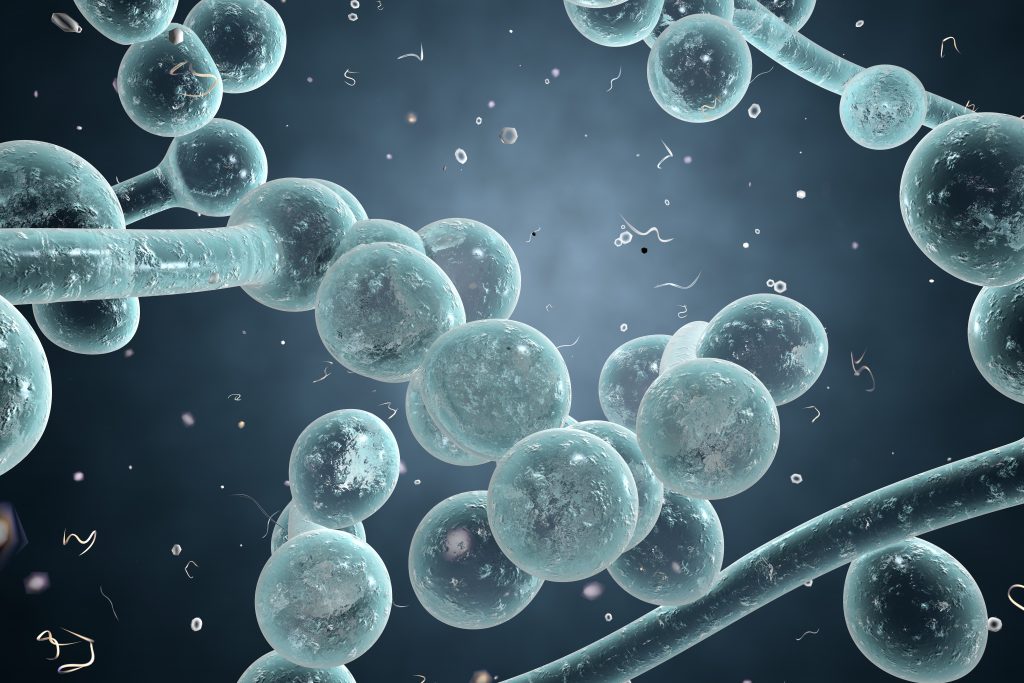
Having trouble maintaining that New Year’s resolution to stay fit? Then you might want to ask a yeast for some advice: it turns out some of their evolutionary fitness is tied to maintaining DNA methylation with a methyltransferase for millions of years. DNA methylation is a common genomic modification, present in all life and prevalent in vertebrates and plants. The regulation of cytosine methylation (5mC) in vertebrates and plants is divided between its deposition and maintenance enzymes. In mammals, de novo methyltransferases such as DNMT3A/B lay down 5mC early in development, then the maintenance methyltransferase DNMT1 passes it through cell division. One would assume that 5mC cannot exist without both of these types of enzymes; but there are some species of yeasts that have only one. How these methyltransferases function has been completely unknown.
The lab of Hiten Madhani at the University of California, San Francisco wanted to study the yeast Cryptococcus neoformans, which only has one DNMT enzyme: DNMT5. They were uncertain as to how C. neoformans was maintaining 5mC in its genome without a pair of DNMTs. They used various cloning approaches, whole-genome bisulfite sequencing (WGBS), and methylated DNA immunoprecipitation sequencing (MeDIP-seq) to explore the function of DNMT5 and the regulation of 5mC in C. neoformans
- Using methyltransferase assays in S. cerevisiae, they found that DNMT5 efficiently methylates hemimethylated DNA in a manner comparable to human DNMT1 rates, and it does not methylate unmodified DNA. They conclude that DNMT5 is a maintenance DNMT.
- They confirmed this by removing DNMT5 expression using a GAL-inducible promoter as well as genetic deletion and reintroduction of the gene. In both experiments, after DNMT5 removal, 5mC is lost; reintroduction of DNMT5 does not restore 5mC even after 90 generations.
- They also showed that 5mC is not able to spread to new sites in vivo or in intro
- To determine how 5mC was established, they examined relatives of C. neoformans
- Close relatives only have DMNT5, while more distant ones have an uncharacterized DNMT: DNMTX
- They found that DNMTX is a de novo DNMT by cloning into C. neoformans and observing de novo 5mC accumulation
- The de novo DNMTX was lost from a C. neoformans ancestor 50-150 million years ago
- Using whole-genome bisulfite sequencing, they found that all closely related strains still have 5mC, and the marks were in analogous genomic regions (ex. transposons), suggesting they serve an important function that is being selected for.
Senior author Hiten Madhani shares, “Natural selection is maintaining methylation at much higher levels than would be expected from a neutral process of random gains and losses. This is the epigenetic equivalent of Darwinian evolution. Previously, there was no evidence of this kind of selection happening over these time scales. This is an entirely novel concept. But now the big question is ‘Is this happening outside of this exceptional circumstance, and if so, how do we find it?’”
Catch this multi-million year story in Cell, January 2020




